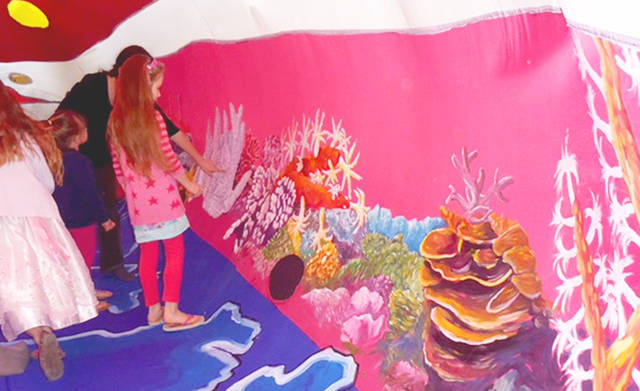This is the seventh in a series on the factors relating to the health of coral reefs globally and around Kauai. Watch upcoming issues of The Garden Island for articles investigating the connection between watersheds and reefs, things affecting reef
This is the seventh in a series on the factors relating to the health of coral reefs globally and around Kauai. Watch upcoming issues of The Garden Island for articles investigating the connection between watersheds and reefs, things affecting reef health, and ways individuals can help save the reefs.
MOLOAA — Anela Quintero can name more than a handful of corals as soon as she sees them.
“We can spot it ourselves, ones like cauliflower or boulder corals,” said the fourth-grader at Kawaikini New Century Public Charter School. “Boulder coral kind of looks like a big rock.”
She said she’s also learned about how the reefs block the bigger waves from reaching the shore by being out in the bay, swimming through the water with her kumus.
Katie Nalesere, education and outreach coordinator for the state’s Department of Land and Natural Resources’ Division of Aquatic Resources, has also been joining Kawaikini School during their field trips.
She said getting kids into the water is the most effective way to teach them about the reefs.
“Seeing the coral with their own eyes and building a personal connection to the resource is the best,” Nalesere said.
Underwater, students learn firsthand about different shapes of corals, that a healthy coral is a colorful coral, and about the importance of coral as a fish habitat, she said.
“However, when we can’t do that, one of the best activities I do is building coral colonies out of clay,” Nalesere said. “It’s even better when we get to do both.”
On Kauai’s North Shore, Robin Mazor with ReefGuradians Hawaii is gearing up for a summer of opportunities for kids to get in the water and learn about corals.
“With more education, there will be a greater amount of people who want to protect it,” she said. “Getting people in the water creates that connection and hopefully fosters a feeling of caring, respect and understanding.”
Kids are exposed to stories about people who are exploring the environments they’re learning about, Mazor said, and some want that experience.
Mazor is looking for volunteers and fundraising for the ReefGuardians Hawaii underwater educational snorkel expeditions to places like Anini Bay for kids in the summer.
Also on the way to the island is a 50-foot inflatable reef, one that will arrive at The Storybook Theatre in Hanapepe just in time for summer.
Evelyn Roth, creator of the inflatable reef and other larger-than-life animals from marine and land environments, will be a special guest at The Storybook Theater from June 10 to June 30.
Projects targeted at kids like the colorful, massive inflatable and interactive reef, are imperative to catch attention and educate the next generation about the health of the coral and the way to preserve it, experts say.
“Children who learn to care for the reef now will become the greatest stewards of our reefs in the future,” Nalesere said. “Not only that, but in the present day, the enthusiasm of children for the reef is carried into the home and family.”


